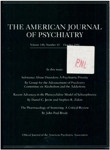Clinical differentiation between lethal catatonia and neuroleptic malignant syndrome
Abstract
Lethal catatonia, a syndrome described several decades before the advent of neuroleptic drugs, has been regarded by many investigators as clinically similar to, and perhaps indistinguishable from, neuroleptic malignant syndrome. However, published case reports of the two syndromes indicate differences in mode of onset, signs and symptoms, and outcome. Lethal catatonia often begins with extreme psychotic excitement, which, if persistent, can lead to fever, exhaustion, and death. Neuroleptic malignant syndrome begins with severe extrapyramidally induced muscle rigidity. Because lethal catatonia often requires neuroleptic treatment and neuroleptic malignant syndrome necessitates immediate cessation of neuroleptics, their early clinical differentiation is important.
Access content
To read the fulltext, please use one of the options below to sign in or purchase access.- Personal login
- Institutional Login
- Sign in via OpenAthens
- Register for access
-
Please login/register if you wish to pair your device and check access availability.
Not a subscriber?
PsychiatryOnline subscription options offer access to the DSM-5 library, books, journals, CME, and patient resources. This all-in-one virtual library provides psychiatrists and mental health professionals with key resources for diagnosis, treatment, research, and professional development.
Need more help? PsychiatryOnline Customer Service may be reached by emailing [email protected] or by calling 800-368-5777 (in the U.S.) or 703-907-7322 (outside the U.S.).



